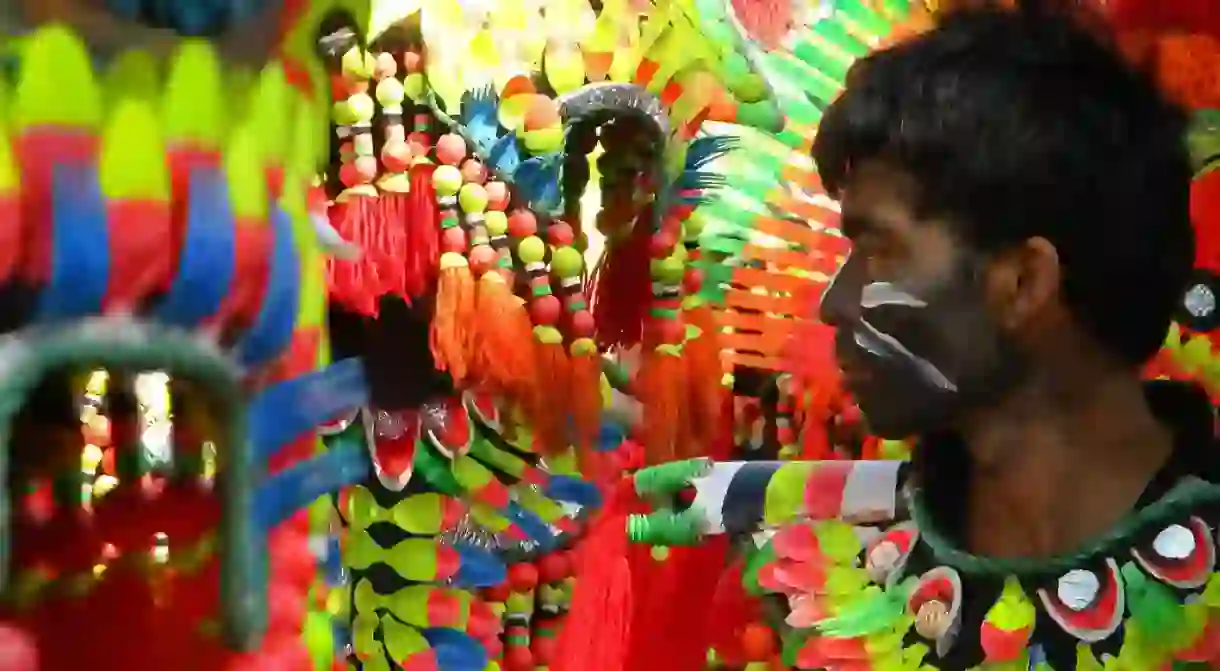How Ati-Atihan Festival Honours The Philippines' Indigenous Peoples

You can try your very best to remain a spectator as the darkened faces and vibrant costumes gyrate their way down the city streets, but sooner or later you’re bound to be one with the energized crowd. The whole city is saturated with an almost palpable spirit, invigorated by powerful drum beats, enthusiastic people, and booze-infused merrymaking. At a festival like the Ati-Atihan, it is impossible to simply stand watching.
Kicking off every year in the grandest way possible, the city of Kalibo, in the province of Aklan, hosts what is regarded as the mother of all Philippine festivals.
The Ati-Atihan festival is celebrated every January, culminating on the month’s third Sunday. 800 years old, the festival is known as the oldest festival in the country and the precursor to both Cebu’s famous Sinulog festival and Iloilo’s Dinagyang — all of which are held today in honor of the Santo Niño (a statue of The Child Jesus). But despite its Catholic affiliations today, the roots of this festival had nothing to do with religion at all.

Translated, the festival’s name means “to pretend or to be like the Atis.” The Atis, or Aetas as they are also commonly called, are characteristically darker-skinned and of small stature. They were the first settlers in many of what are now the Philippine islands. This included the island of Panay, where Kalibo is located. Now, two famous variants of the Ati-Atihan’s history circulate. Both begin with a group of datus (chieftains) and their families fleeing their Malay island of Borneo, from a tyrannous sultan, and docking on the shores of Panay. In exchange for some cloth, brass basins, and a golden salakot they had in tow, they then purchased the lowlands from the indigenous Aetas who conveniently took dwelling within the highlands. It is from here on that the two stories differ.

In one version, it is said that to celebrate the new relationship and peaceful reconciliation between both parties, festivities took place and the Malay migrants donned darkened faces in honor of their new hosts. In the other, it is said that after experiencing a bad harvest, the Aetas were forced to descend to the plains to seek help from the new settlers. The Malays helped out with a share of their food, and, in gratitude, the Aetas danced and sang for them. Though tracing the exact origins of the festival has proven quite difficult, many have watched it evolve through the years.
When the Philippines fell under Spanish colonial rule, waves of conversions to Catholicism were carried out across its many islands. This allowed religion to slowly integrate itself into many aspects of Filipino culture, including festivals. The Ati-Atihan then became a celebration to honor the Santo Niño.

Today, while fragments of the Ati-Atihan’s history make their appearances throughout the festivities (such as festival-goers painting their faces with soot, holding Catholic mass, and the presence of the Santo Niño statue), that it has also become days of endless merrymaking and an all out street party is undeniable.
In today’s Ati-Atihan, attendees will come across street dancers in beautiful colorful costumes with blackened faces — as tribute to the island’s indigenous people — walking alongside groups of friends or complete families in the craziest, most random of costumes. Some events display impressively choreographed dances inspired by the Aetas while some are held for the sole purpose of “snake dancing” or people holding on to each other, weaving rhythmically like a snake. It’s a splendid mesh of culture and utter fun, and the city of Kalibo hosts it every year for both locals and tourists to enjoy.
https://www.instagram.com/p/BPTvu8gj1RT/?tagged=atiatihan2017
The next Ati-Atihan will run through the 15th of January up to the 21st, each day filled with all kinds of exciting affairs. See here for next year’s event line-up and consider getting in on dancing, drinking, and celebrating down Kalibo’s streets for days on end.













